Is Graphic Design Part of Digital Communication
Re-approval
Please note this course is undergoing re-approval. This is the process by which we ensure the course continues to provide a high quality academic experience. During re-approval there may be some changes to the course content displayed on this page. Please contact us if you have any questions about the course.
This course aims to equip you with the creative, conceptual, technical and critical skills expected of designers in the twenty-first century. It is part of the Graphic Communication Design programme.
Why choose this course at Central Saint Martins
- Platforms and communities: You can specialise in a guided selection of platforms based on disciplinary areas of expertise: Narrative and Voice; Strategy and Identity; Time and Movement; Information and Systems; and Experience and Environment. Later in the course, these lead to communities of practice, based on themes and issues.
- Co-design your curriculum: In your final year of study, you will directly influence the curriculum by developing subjects for exploration and experimentation.
- Wide-ranging and specialist practice: The course structure allows you to balance the relationship between breadth and specialism.
- Live projects: You can elect to tackle live briefs engaging local government, non-profits and companies. Recently, this has included work with organisations such as the BBC, the British Library, Lightvert, Louis Jadot, Mother, NHS Camden Clinical Commissioning Group, Tezenis and Transport for London.
Learn about BA Graphic Communication Design at Central Saint Martins
-
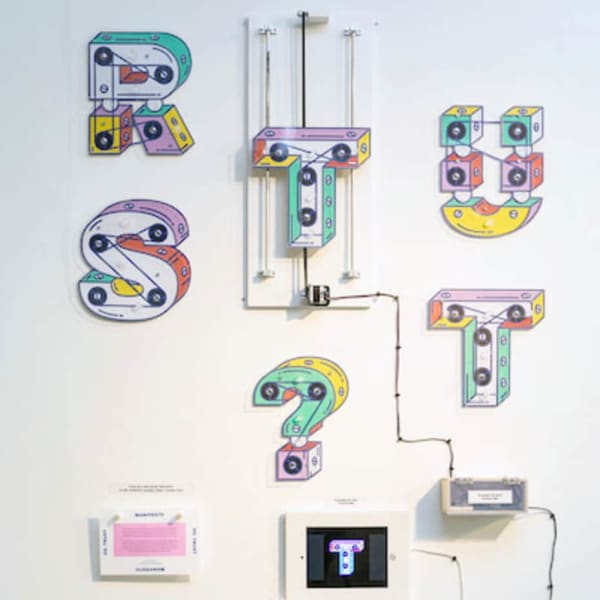
, Clara Chong | Digital Trust -
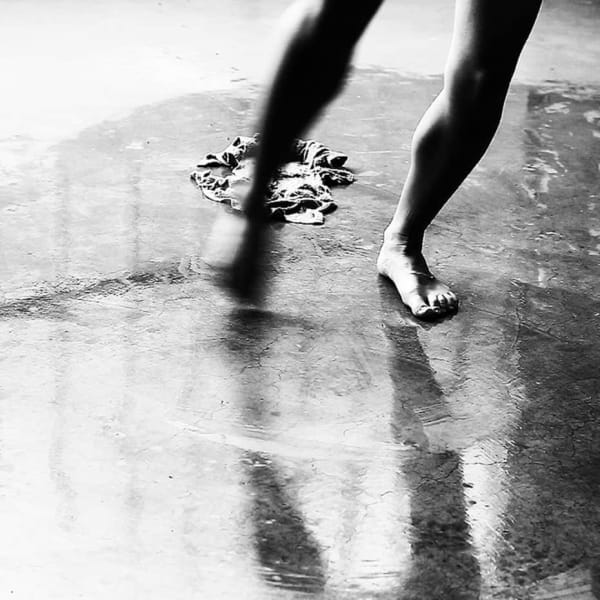
, Aimee Blow | Water Patterns -
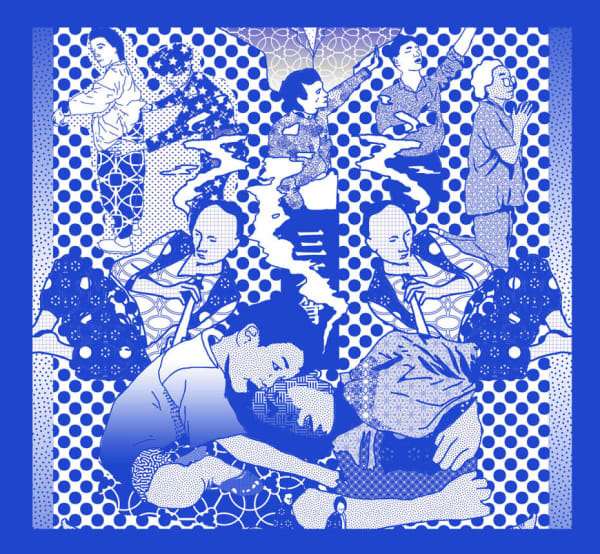
, Alison Pong | Hong Kong Walled City -
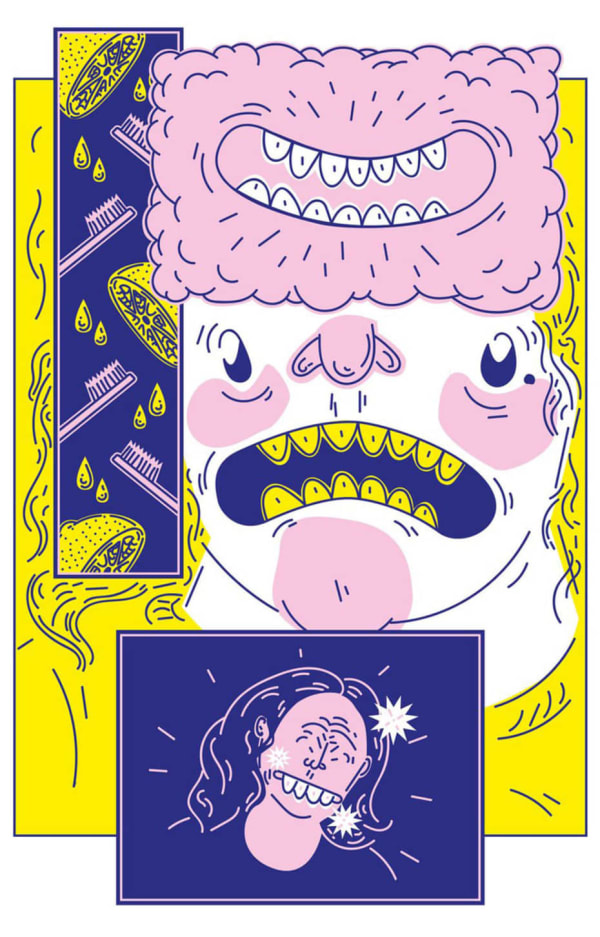
, Inguna Ziemele | Not Perfect -
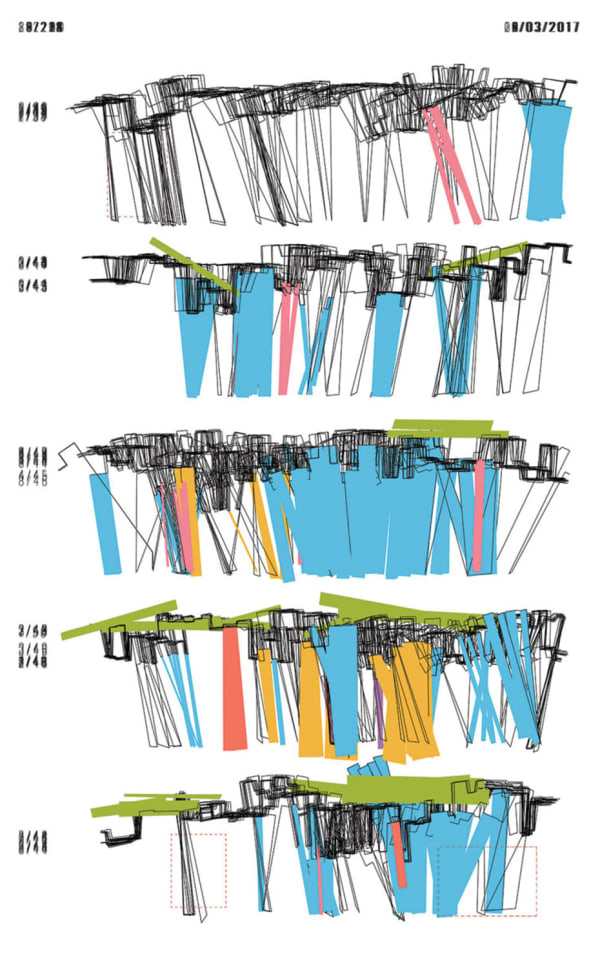
, Jiawei Yu | 30-Day Library -
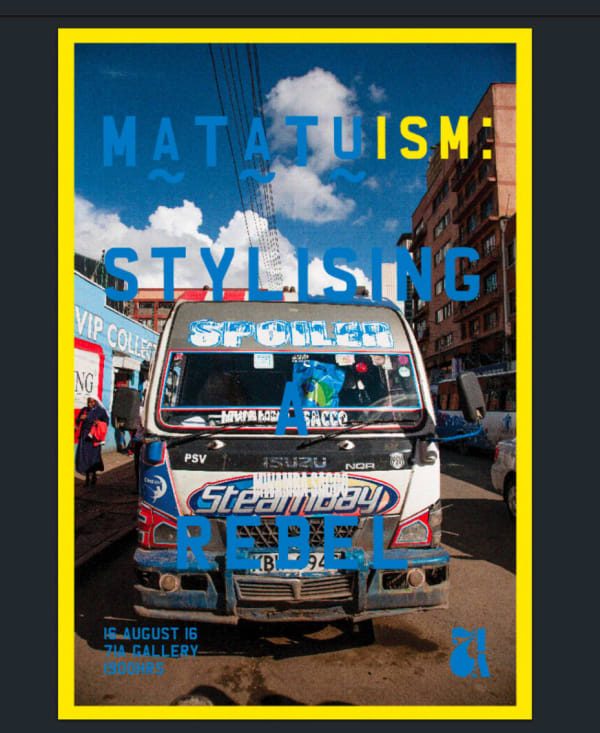
, Odira Morewabone | Matatuism- Stylising A Rebel -
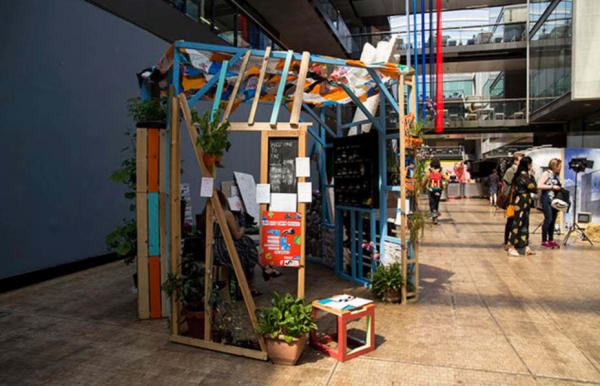
, Ellen Foster Price | What Does Sustainability Mean To You? -
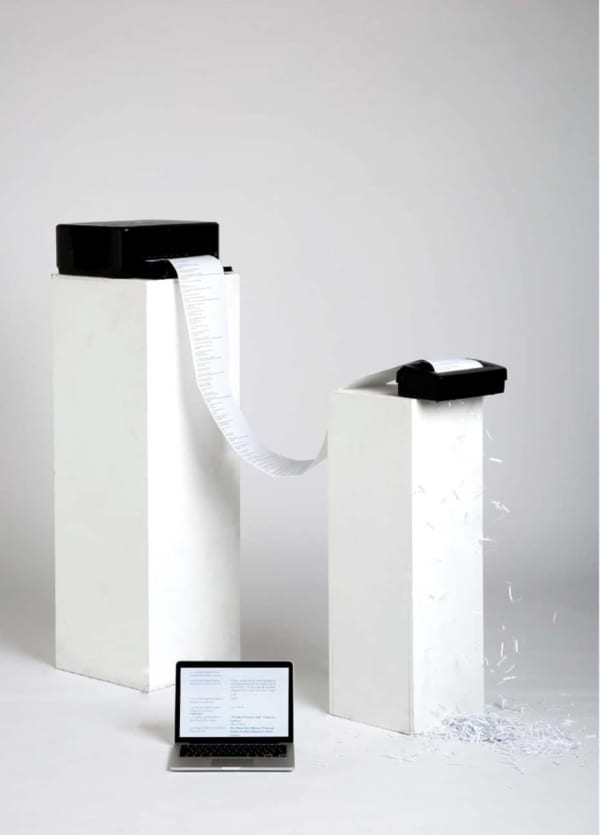
, Lucy Budd | Delete -
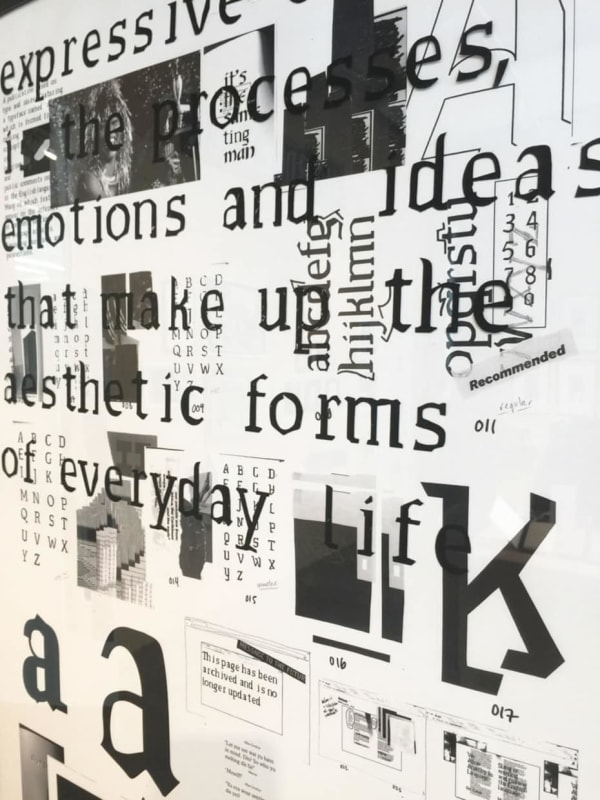
, Nasharla Green | Slanguage -
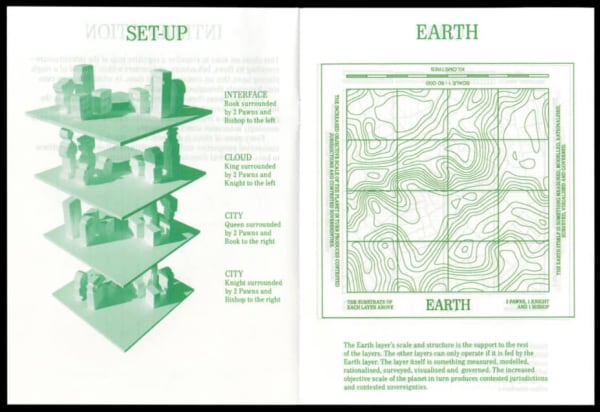
, Kaori Toh | Infrastructural Chess
-
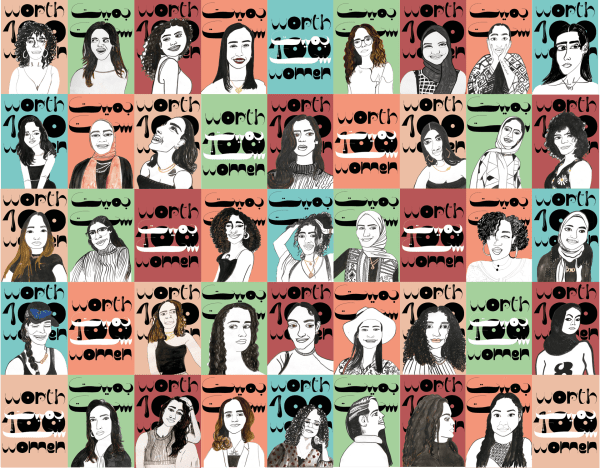
Farida Eltigi, BA Graphic Communication Design For the past two decades, the CSM Museum & Study Collection has actively purchased works from graduating students. This year, the Deans' Awards supports the purchase of more work than ever before as the Museum welcomes 28 new pieces into its
-
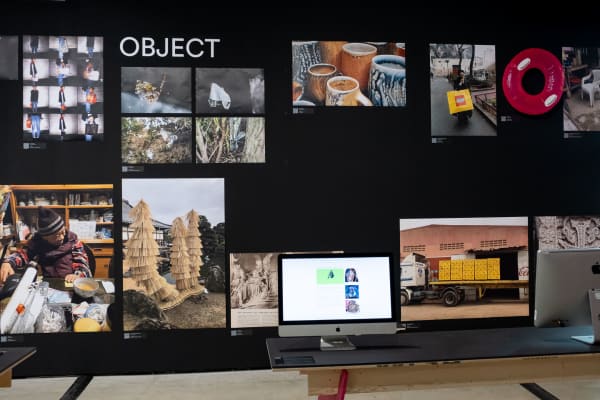
NOVA X exhibition, Lethaby Gallery (photo: Andrea Capello) Celebrating a decade of award-winning creative practice, NOVA X shares the stories past winners of the MullenLowe NOVA Awards for Fresh Creative Talent.
-
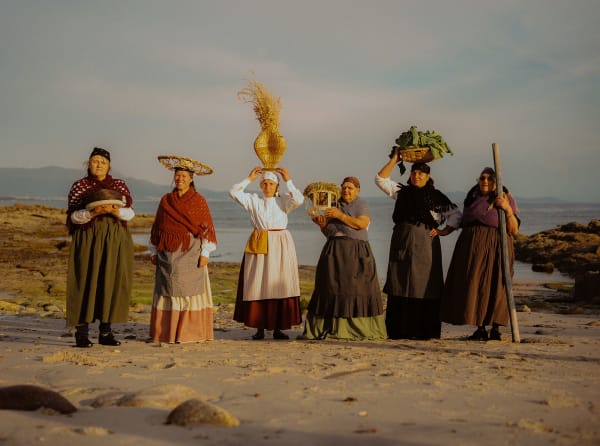
Paula Camiña Eiras, MA Biodesign On the Graduate Showcase you'll find a collection of work by students who place collaboration at the centre of their creative practice. Here, we pause on three projects that rely on connection and codesign.
-
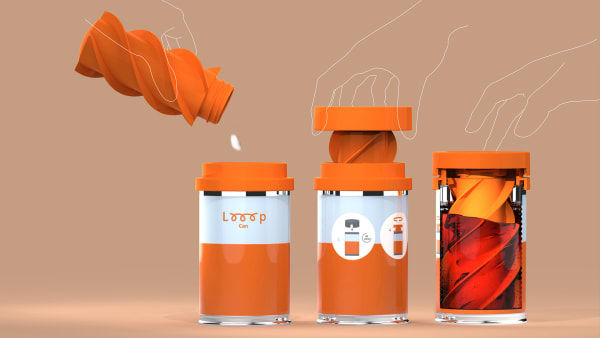
Cheuk Laam Wong, BA Product and Industrial Design From a kit for washing reusable menstruation pads to ceramics fired by bacteria, the shortlist for this year's MullenLowe NOVA Awards is fittingly bold and brilliant. And with YourNOVA, now it's your turn to vote for your favourite.
-
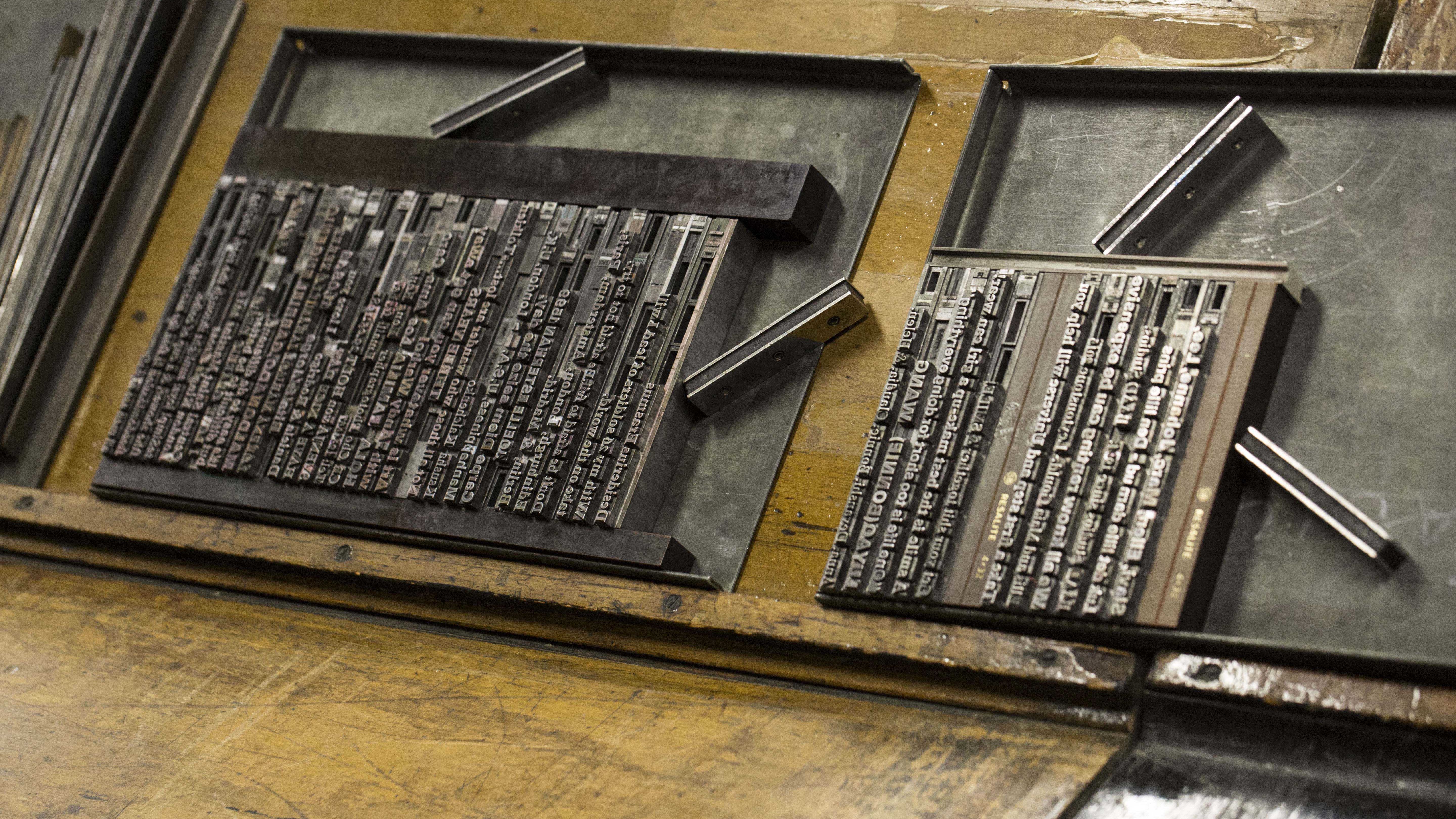
Credit: Image courtesy of Central Saint Martins Image courtesy of Central Saint Martins,
-
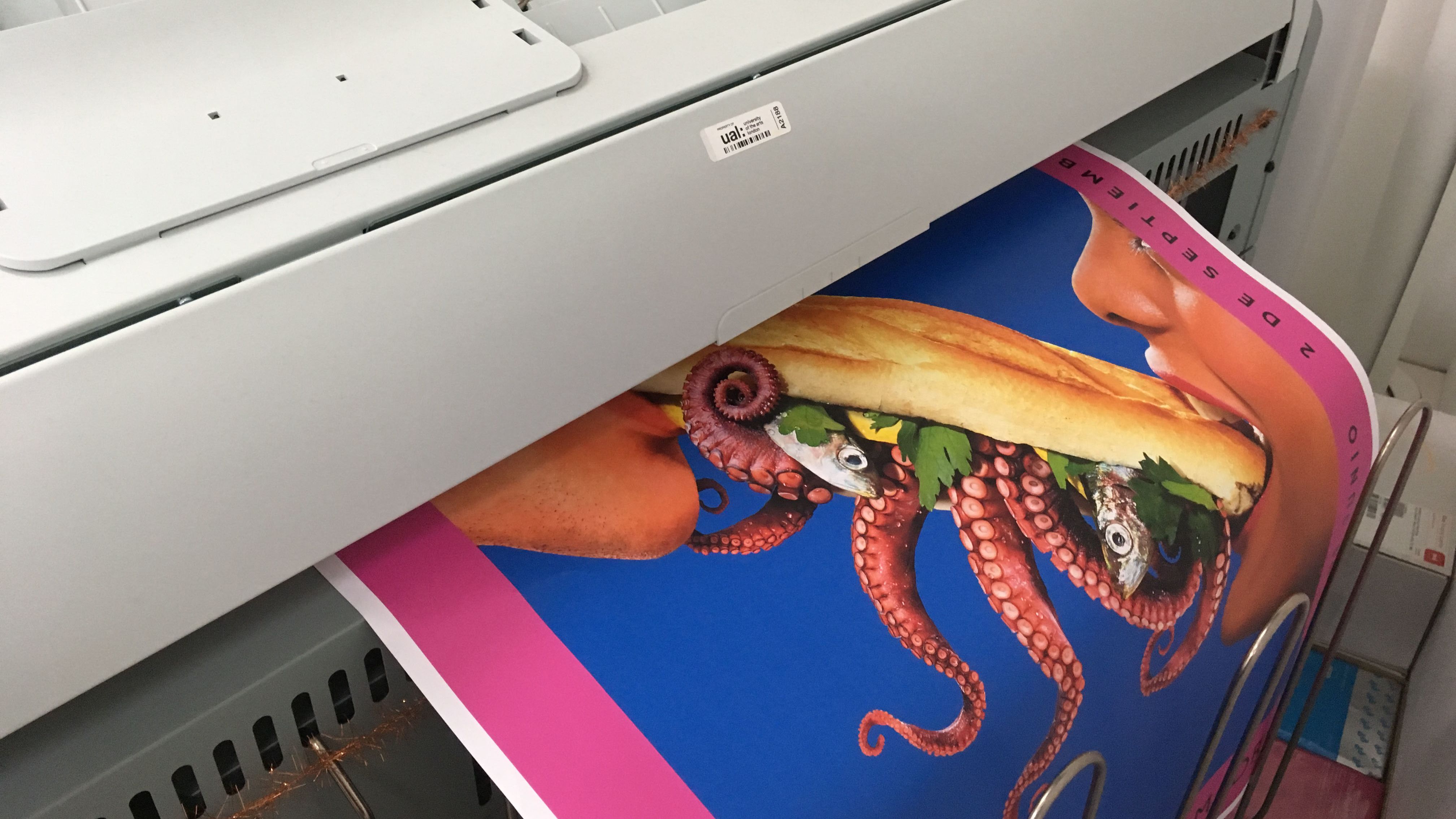
Image courtesy of Central Saint Martins,
Course overview
Graphic communication design practice is changing. The wide availability of design software and digital production tools has resulted in a re-evaluation of what the trained, skilled designer can offer. In response, design professions have developed more sophisticated consultancy models. Design thinking, marketing, branding and strategy are now offered as a central part of their services. Graphic communication design is also increasingly carried out in a diverse range of contexts. These range from large commercial and governmental departments to independent practitioners and small enterprises.
BA Graphic Communication Design at Central Saint Martins takes into account this current industry climate. It explores graphic communication design as an expanded practice. It will provide you with a solid grounding in the discipline's core languages, contexts and applications, while also encouraging you to test and stretch its boundaries. The course structure is devised to support three types of practitioner:
- Theinter-disciplinary designer or polymath who wants to stay broad-based
- Thehybrid designer who works across a targeted combination of areas
- Thespecialistwho has more specific discipline focus
The course curriculum places emphasis on five core processes: typography, digital, context, image and print. These are taught throughout the course and will provide a foundation for your studio work and theoretical studies. Led by staff specialists, you will also be introduced to areas such as photography, printmaking and bookbinding.
The course structure enables student mobility across five platforms and communities of practice. The platforms are an investigation into the multiple disciplines of graphic communication design. They are formulated in correspondence to areas of contemporary design practice. The platforms give focus to the intentions and values of your practice. They also offer points of departure as you develop your identity within a community of practice in Stages 2 and 3. Overall, this unique structure will allow you to be directly involved in the co-creation of the course curriculum.
Course units
The BA Graphic Communication Design curriculum is delivered through a mix of project work, lectures, seminars and assignments in discrete units. The project brief is the main vehicle for learning and teaching. Briefs usually require an individual response to a problem, theme, issue or provocation. You will produce an outcome which considers content, form, communication and audience. The course also aims to provide regular opportunities to engage with client-led, live briefs. In the past, this has included work with organisations such as Ogilvy CommonHealth Worldwide and Camden Council.
Stage 1
Unit 1: An Introduction to Graphic Communication Design
Unit 2: Media and Methods
Unit 3: Core Processes
Unit 4: Introduction to Platforms
Stage 1 will introduce you to design methods through a complex or "wicked" problem. This will immerse you in an intensive graphic communication design project. You will begin with skills in research, collaboration and idea generation. This will be followed by an introduction to the media and methods of graphic communication design practice. You will undertake projects which involve processes such as photography, printmaking, letterpress and digital media. In the latter half of Stage 1, you will be introduced to the five platforms of the course. The platforms are:
- Narrative and Voice: Keywords include illustration, storytelling, image-making, photography, visual language, pacing and framing
- Strategy and Identity: Keywords include branding, advertising, visual identity, marketing and persuasion
- Time and Movement: Keywords include moving image, animation, sound design and performance
- Information and Systems: Keywords include information design, typography, data visualisation, mapping and publishing
- Experience and Environment: Keywords include exhibition design, social design, digital media, interaction design, event design and service design
The platforms act as a departure point for the skills and approaches associated with a specific area in graphic communication design. Each platform corresponds to an area of professional practice, but is open-ended. This reflects the increasingly interdisciplinary nature of graphic communication. In Stage 1, you will study in three of the five platforms. You will be placed in these platforms based on a survey of your preferences.
Stage 2
Unit 5: Exploring Practice 1
Unit 7: Exploring Practice 2
Unit 8: Identifying Communities of Practice
Creative Unions: Socially Engaged Practices for an Ethical World
In Stage 2, you will develop your skills through the platform structure. Although they are distinctive in character, there are commonalities and shared experiences. This allows students to see the interconnections in the landscape of design practice. You will have the opportunity to both specialise and collaborate with students across the course. You will explore notions of collaboration, participation and the relationship with audiences. This stage is delivered through lectures, workshops and seminars. These explore cultural, social and theoretical contexts of contemporary graphic communication design practice. You will also have opportunities to engage further in the techniques and skills introduced in Stage 1.
Stage 3
Unit 9: Situating Practice
Unit 10: Communities of Practice
Stage 3 addresses problem-finding, problem-solving and problem-setting. You will focus on depth of knowledge and situating your practice. You will work in student-initiated communities of practice, based around ideas arrived at in Stage 2. Communities of practice are led by tutor teams with relevant experience in theory and practice. This is an outward-facing structure, allowing you to make connections and build networks. The aim is to broaden your practice in relation to wider socio-cultural issues and to support your professional practice after graduation.
The final unit is focused on the development of a substantial body of work and written critical reflection. This should have a clear direction, strong rationale and demonstrate your priorities as a creative practitioner.
Exchange opportunities
Students enrolled on BA Graphic Communication Design have the opportunity to spend time studying outside of the UK at a partner institution. Studying overseas allows you to experience a new culture, an alternative perspective on the course's subject discipline and different learning and teaching methods. Alongside this, BA Graphic Communication Design is actively engaged in the University's Study Abroad scheme, with the incoming international students bringing an important additional dynamic to the course.
Currently only a small number of places are available, which will be subject to Government guidelines on travel abroad during the COVID-19 pandemic.
Mode of study
BA Graphic Communication Design runs for 90 weeks in full-time mode. It is divided into three stages over three academic years. Each stage lasts 30 weeks.
You will be expected to commit 40 hours per week to study, which includes teaching time and independent study.
Credit and award requirements
The course is credit-rated at 360 credits, with 120 credits at each stage (level).
On successfully completing the course, you will gain a Bachelor of Arts with Honours (BA Hons degree).
Under the Framework for Higher Education Qualifications the stages for a BA are: Stage 1 (Level 4), Stage 2 (Level 5) and Stage 3 (Level 6). In order to progress to the next stage, all units of the preceding stage must normally be passed: 120 credits must be achieved in each stage. The classification of the award will be derived from the marks of units in Stages 2 and 3 or only Stage 3, using a dual algorithm.
If you are unable to continue on the course, a Certificate of Higher Education (CertHE) will normally be offered following the successful completion of Level 4 (or 120 credits), or a Diploma in Higher Education (DipHE) following the successful completion of Level 5 (or 240 credits).
Learning and teaching methods
Your primary means of learning will be through studio practice. During your course you will engage with learning and teaching that includes both online and face-to-face modes. Typically, this will include:
- Unit and project briefings
- Set and self-initiated project briefs
- Inductions, lectures and seminars
- Workshops and interdisciplinary study teams
- Event-based teaching (e.g. publications, showcases)
- Learning by doing (thinking through making)
- Peer learning
- Self and peer assessment
- Guest speakers
- Group discussions, reviews and critiques
- Working with clients on live projects and competitions
- Essay writing and supervision
- Independent study
- Platform-based teaching
- Communities of practice (working student groups based on student-initiated themes).
Assessment methods
- Evidence of participation in taught activities
- Presentation of a completed set of projects
- Portfolio and verbal presentations
- Individual written reflections
- Learning agreements
- Written and visual documentation
- Essays
- Critical reports
Acting Stage 3 Leader: Leslie Kwok
Platform Leader, Experience and Environment: Abbie Vickress
Platform Leader, Information and Systems: Paul Finn
Platform Leader, Strategy and Identity: Dr David Preston
Platform Leader, Narrative and Voice: Andrew Hall
Platform Leader, Time and Movement: Michelle Salamon
Lead Tutor, Typography: Stephen Barrett
Lead Tutor, Digital: Jazmin Morris
Lead Tutor, Print and Production: Simon Goode
Lead Tutor, Lens: Gary Wallis
Contextual Studies Leader, Stage 1 and Stage 2: Paul Rennie
Contextual Studies Leader, Stage 3: Andrea Lioy
Course Lecturer: Mikael Calandra Achode
Course Lecturer: Anoushka Khandwala
Programme Director: Rebecca Ross
How to apply
Opportunities for all
We are committed to making university education an achievable option for a wider range of people and to supporting all of our students in achieving their potential both during and after their courses.
We welcome applications from people with disabilities. If you have a disability (e.g. mobility difficulties, sensory impairments, medical or mental health conditions or Asperger's syndrome) we strongly encourage you to contact us on disability@arts.ac.uk or +44 (0)20 7514 6156 so that we can plan the right support for you. All enquiries are treated confidentially. To find out more, visit our Disability & Dyslexia webpages.
Entry requirements
The standard entry requirements for this course are as follows:
One or a combination of the following accepted full Level 3 qualifications:
- Pass at Foundation Diploma in Art and Design (Level 3 or 4) and one A Level at grade C or above
- Two A Levels at grade C or above (preferred subjects include Art, Art and Design or Design and Technology)
- Merit, Pass, Pass (MPP) at BTEC Extended Diploma (preferred subjects include Art, Art and Design or Design and Technology)
- Pass at UAL Extended Diploma
- Access to Higher Education Diploma (preferred subjects include Art, Art and Design or Design and Technology)
- Equivalent EU/international qualifications, such as International Baccalaureate Diploma (24 points)
And three GCSE passes at grade 4 or above (grade A*–C).
Entry to this course will also be determined by assessment of your portfolio. A very high proportion of successful applicants complete a Foundation Diploma in Art and Design.
AP(E)L – Accreditation of Prior (Experiential) Learning
Exceptionally applicants who do not meet these course entry requirements may still be considered. The course team will consider each application that demonstrates additional strengths and alternative evidence. This might, for example, be demonstrated by:
- Related academic or work experience
- The quality of the personal statement
- A strong academic or other professional reference
Or a combination of these factors.
Each application will be considered on its own merit but cannot guarantee an offer in each case.
English language requirements
IELTS score of 6.0 or above, with at least 5.5 in reading, writing, listening and speaking (please check our main English language requirements webpage).
Selection criteria
Applicants are selected according to their demonstration of potential and current ability to:
- Work imaginatively and creatively in graphic and visual media
- Apply original thought to any given problem and not mimic prevalent styles
- Demonstrate a range of skills and technical abilities
- Provide evidence of intellectual enquiry within their work
- Demonstrate potential to experiment, to test the parameters of design
- Demonstrate relevant research and reflect critically on their learning
- Demonstrate cultural awareness and/or contextual framework of their work
- Identify historical and contemporary graphic design practices
- Articulate and communicate intentions clearly.
What we are looking for
We are interested in students who are prepared to question and to take a critical perspective and who show potential to develop as innovative artists.
Making your application
You should apply through Universities and Colleges Admissions Service (UCAS) and you will need the following information:
University code: U65
UCAS Code: W215
Transfers
If you are currently studying somewhere else on a course in an equivalent subject area and would like to transfer to this course, you can transfer to:
Year 2, if you've completed 120 credits in Year 1
Year 3, if you've completely 240 credits in Years 1 and 2
Apply via UCAS and choose Year 2 or 3 for your POE (Point of Entry). Please check our Student Transfer Policy for more important information and be ready to provide us with your current course handbook and Year 1/Year 2 unit transcripts.
Please be ready to provide an official document (translated into English) from your current university, explaining the learning outcomes of the units you have completed.
Deferred entry
Central Saint Martins does not accept applications for deferred entry. You should therefore apply in the year you wish to study.
Application deadline
We recommend you apply by 26 January 2022 for equal consideration. However this course will consider applications after that date, subject to places being available.
Communicating with you
After you have successfully submitted your application, you will receive an email confirming we have successfully received your application and providing you with your login details for the UAL Portal. We will request any additional information from you, including inviting you to upload documents / portfolio / book an interview, through the portal. You should check your UAL Portal regularly for any important updates and requests.
Please add csm.ukeu@arts.ac.uk to your contacts to ensure that you do not miss any important updates re: your application to UAL. Also consider altering your spam or junk mail filter to ensure that emails from @arts.ac.uk get through to you.
There are two ways international students can apply to an undergraduate course at Central Saint Martins:
- Universities and Colleges Admissions Service (UCAS) online application system
- Through one of our official representatives in your country who can support you with your UCAS application
You can only apply to the same course once per year.
When applying via UCAS you will need the following information:
University code: U65
UCAS Code: W215
Transfers
If you are currently studying somewhere else on a course in an equivalent subject area and would like to transfer to this course, you can transfer to:
Year 2, if you've completed 120 credits in Year 1
Year 3, if you've completely 240 credits in Years 1 and 2
Apply via UCAS and choose Year 2 or 3 for your POE (Point of Entry). Please check our Student Transfer Policy for more important information and be ready to provide us with your current course handbook and Year 1/Year 2 unit transcripts.
Please be ready to provide an official document (translated into English) from your current university, explaining the learning outcomes of the units you have completed.
Visas
Read our visit our immigration and visa advice page to find out whether you need a visa to study.
Deferred entry
Central Saint Martins does not accept applications for deferred entry. You should therefore apply in the year you wish to study.
Application deadline
We recommend you apply by 26 January 2022 for equal consideration. However this course will consider applications after that date, subject to places being available.
Communicating with you
After you have successfully submitted your application, you will receive an email confirming we have successfully received your application and providing you with your login details for the UAL Portal. We will request any additional information from you, including inviting you to upload documents / portfolio / book an interview, through the portal. You should check your UAL Portal regularly for any important updates and requests.
Please add csm.international@arts.ac.uk to your contacts to ensure that you do not miss any important updates re: your application to UAL. Also consider altering your spam or junk mail filter to ensure that emails from @arts.ac.uk get through to you.
After you apply
What happens next
Initial application check
We check your application to see if you meet the standard entry requirements for the course. If you do, you will be invited to submit a portfolio through UAL's online portfolio review system.
Digital portfolio
Your portfolio should be no more than 15 pages. It should be made up of your best work, showing your skills and thinking. You can create the pages in any layout (For example: presentation boards) but they should be uploaded as jpeg images.
It should:
- Include primary and secondary research, ideas development and experimentation with a different range of materials, techniques and media as well as finished pieces.
- Include images from sketchbooks or notebooks, working drawings, life-drawing, photography and media manipulation, 2D or 3D work. Your work could be the result of set projects and self-initiated work.
- Demonstrate your ability to tackle visual problems and find inventive and creative solutions.
- Be organised into categories to make it easier to view. Avoid repetition and demonstrate a wide range of your skills, and include brief (one-sentence) explanatory captions.
For more portfolio advice please visit our portfolio advice page .
Interview
Following the review of the portfolio we select a small number of applicants to move on to the next stage of the process. These applicants will be invited to an online interview. If you are invited to interview, you will be notified of the format in advance.
How we notify you of the outcome of your application
You will receive the final outcome of your application through UCAS track.
Feedback
This course receives a high number of applications, and unfortunately we cannot provide feedback to everyone who is unsuccessful. We can only provide feedback after you have had an interview.
If you would like to request feedback – please email csm.ukeu@arts.ac.uk. We are only able to provide feedback to you directly, or to someone you have told us in writing can receive it on your behalf.
Each and every application is carefully considered by a member(s) of our academic team. With so many strong applicants to choose from, it is often a very difficult decision to make. If you are unsuccessful, you are welcome to apply to us again in the future.
Fees and funding
Home fee
£9,250 per year
This fee is correct for 2021/22 entry and is subject to change for 2022/23 entry. Tuition fees may increase in future years for new and continuing students.
Home fees are currently charged to UK resident nationals. However, the rules are complex. Find out more about our tuition fees.
From 2021/22 entry, most EU students will be charged the International tuition fee rate, depending on your individual circumstances. If you started your course in October 2020 or earlier, you'll continue to pay Home (UK) fees for the duration of your course. Read more advice for EU students.
International fee
£22,920 per year
This fee is correct for 2021/22 entry and is subject to change for 2022/23 entry. Tuition fees for international students may increase by up to 5% in each future year of your course.
Students from countries outside of the UK are currently charged international fees. The rules are complex so read more about our tuition fees.
From 2021/22 entry, most EU students will be charged the International tuition fee rate, depending on your individual circumstances. If you started your course in October 2020 or earlier, you'll continue to pay Home (UK) fees for the duration of your course. Read more advice for EU students.
Careers and alumni
BA Graphic Communication Design students leave with a broad and valuable understanding of graphic communication design practice in its many forms. Skills acquired enable graduates to become versatile practitioners in many exciting and diverse professions.
Recent alumni activity demonstrates the breadth of careers within the subject, embracing interactive design, web design, advertising, graphic design, information design, illustration, photography, film & TV, animation, editorial design, typographic design, packaging design, brand development, exhibition design, book design, 3D design, as well as in fine art, writing and filmmaking.
Course alumni include: Alan Aboud, Alan Fletcher, Andy Altman, Colin Forbes, Damon Murray, Derek Birdsall, Dylan Jones, Graham Wood, Huw Morgan, Jonathan Barnbrook, Katy Hepburn, Ken Garland, Lucienne Roberts, Michael Worthington, Minkie Spiro, Morag Myerscough, Paul Neale, Phil Baines, Platon, Richard Hollis, Sandro Sodano, Stephen Sorrell, Tom Hingston, Tony Chambers.
Design groups or companies formed by our graduates or employing our graduates include: Aboud Sodano, Bibliotheque Design, Barnbrook Design, Fallon, FUEL Design, GTF, Johnson Banks, Moving Brands, Multistorey, Pentagram, Praline, REG Design, Sans+Baum, Studio Myerscough, Tom Hingston Studio, Tomato, Why Not Associates, Wolff Ollins.
Developing your links
At the end of Stage One you will be expected to take part in the 'End of Year Folio Show' and at the end of Stage Two, the 'Work in Progress Show'; these shows are public exhibitions and although not assessed, are seen as key learning experiences as preparation for your Degree Show.
There are regular opportunities to engage with client-led live briefs featuring brands, such as LVMH, Samsung and Sony, and to participate in national and international student design competitions, such as RSA, Lloyds TSB, and D&AD. The course is a member of D&AD - BA Graphic Design students gain from discounts on submissions to the D&AD Student Awards and other benefits.
Arrangements for work experience or internships are encouraged and facilitated on an informal basis. Study trips, studio visits and collaborative projects (either within UAL or with partner institutions at home and abroad) offer further opportunities to study within a broader context. During Stage Two a number of 'Study Abroad' students from the USA and other countries join the course for one, two or three terms. Context 'creative writing' groups, student clubs such as 'book club' and 'sketchbook club', exhibitions such as 'work in progress', 'pop-up shows' and the 'degree show', 'interest groups', 'guest lectures' and a school-wide 'elective' present additional opportunities for social interaction or collaboration.
For details of the wide range of careers support provided for students, please visit our Careers support page.
Is Graphic Design Part of Digital Communication
Source: https://www.arts.ac.uk/subjects/communication-and-graphic-design/undergraduate/ba-hons-graphic-communication-design-csm










0 Response to "Is Graphic Design Part of Digital Communication"
Post a Comment